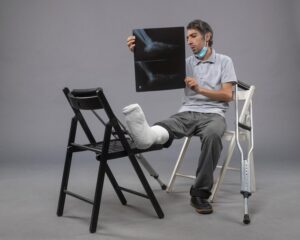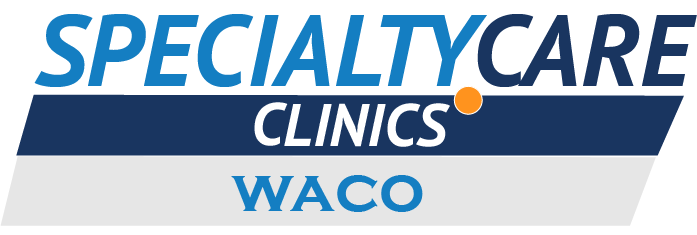Auto accidents can result in a variety of injuries, with fractured bones being one of the most common and potentially debilitating outcomes. Fractured bones require prompt and precise care to ensure proper healing and to prevent long-term complications. Auto injury care specialists are equipped to handle these injuries with advanced treatment options, effective pain management, and personalized recovery plans.

Understanding Fractured Bones from Auto Injuries
What Are Fractured Bones?
Fractures occur when a bone breaks or cracks due to excessive force. In auto accidents, the high-impact forces often lead to bone fractures in various parts of the body, including arms, legs, ribs, and the spine.
Types of Fractures
- Simple (Closed) Fracture: The bone is broken but does not pierce the skin.
- Compound (Open) Fracture: The broken bone punctures the skin, increasing the risk of infection.
- Comminuted Fracture: The bone shatters into multiple pieces, often requiring surgical intervention.
- Stress Fracture: Small cracks in the bone due to repeated stress or impact.
- Compression Fracture: Common in the spine, caused by high-impact forces compressing the vertebrae.
Causes of Fractured Bones in Auto Accidents
- Direct Impact: Collisions can cause immediate trauma to the bones.
- Seat Belt Injuries: While lifesaving, seatbelts can exert significant force, leading to rib or collarbone fractures.
- Airbag Deployment: Sudden airbag deployment can contribute to fractures, particularly in the arms and wrists.
- Ejection from Vehicle: Being thrown from the vehicle dramatically increases the risk of severe fractures.
- Crushing Injuries: When a part of the body is trapped or compressed during an accident.
Symptoms of Fractured Bones
Physical Signs
- Intense pain at the site of the injury.
- Swelling, bruising, or tenderness around the affected area.
- Inability to move the injured limb or body part.
- Visible deformity in severe fractures.
- Bone protruding through the skin in open fractures.
Secondary Symptoms
- Numbness or tingling due to nerve involvement.
- Difficulty breathing if ribs are fractured.
- Dizziness or shock, especially in severe injuries.
Treatment Options for Fractured Bones
Non-Surgical Treatment
1. Immobilization
- Use of casts, splints, or braces to stabilize the bone.
- Essential for allowing the bone to heal naturally over time.
2. Pain Management
- Over-the-counter pain relievers or prescribed medications.
- Anti-inflammatory drugs to reduce swelling.
3. Physical Therapy
- Exercises to restore strength and flexibility after immobilization.
- Gradual reintroduction of movement to prevent stiffness.
Surgical Treatment
1. Open Reduction and Internal Fixation (ORIF)
- Surgical realignment of the bone using plates, screws, or rods.
- Often required for severe or comminuted fractures.
2. External Fixation
- Metal pins and rods placed outside the body to stabilize the fracture.
- Used for complex fractures or when the soft tissue is damaged.
3. Bone Grafting
- A graft is used to replace or repair damaged bone, promoting healing in severe cases.
Why Choose Professional Auto Injury Care?

- Expertise in Trauma Care
Auto injury specialists have extensive experience in managing complex trauma cases, including multiple fractures.
- Personalized Treatment Plans
Every injury is unique, and specialists provide tailored care to meet the specific needs of each patient.
- Advanced Techniques
From minimally invasive surgeries to state-of-the-art rehabilitation methods, professionals use the latest advancements to ensure optimal outcomes.
- Pain Management Focus
Specialists prioritize patient comfort through effective pain management strategies.
FAQs
1. How soon should I seek treatment for a suspected fracture after an auto accident?
It’s crucial to seek immediate medical attention if you suspect a fracture. Early diagnosis and treatment can prevent complications.
2. Can fractures heal without surgery?
Many fractures, especially simple ones, heal with non-surgical treatments like immobilization. However, complex fractures often require surgical intervention.
3. What happens if a fractured bone is left untreated?
Untreated fractures can lead to improper healing, chronic pain, deformity, and reduced mobility.
4. Is physical therapy necessary after a fracture?
Yes, physical therapy is vital for restoring strength, flexibility, and functionality after the initial healing process.
5. Are there risks associated with surgical treatments for fractures?
All surgeries carry some risk, but modern techniques minimize complications. Your specialist will discuss potential risks and benefits.
Conclusion
Fractured bones from auto accidents are serious injuries that require expert care for proper healing and long-term health. Auto injury care specialists play a critical role in diagnosing, treating, and rehabilitating these injuries. From advanced imaging techniques to minimally invasive surgeries and personalized recovery plans, their expertise ensures optimal outcomes for patients.
If you or a loved one has suffered a fractured bone due to an auto accident, don’t delay seeking professional care. Early intervention and a tailored treatment plan are the keys to a successful recovery and a return to a healthy, active lifestyle.
Schedule an appointment with our Auto injury care for fractured bones (254) 308-7868 or visit us https://sccwaco.com/
